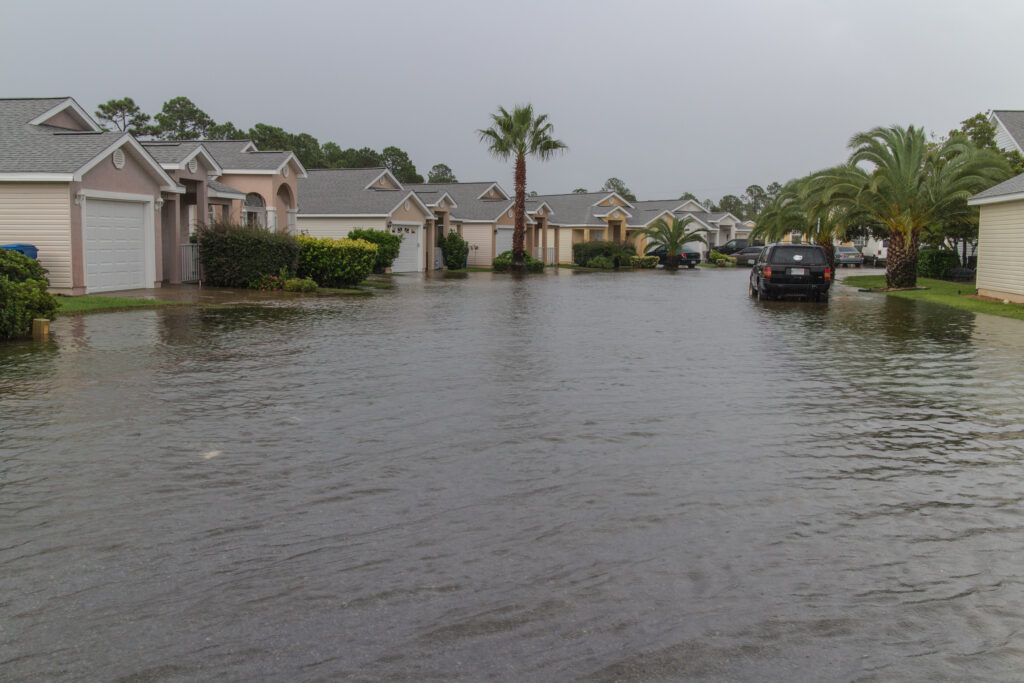For all the beauty and wonderful living opportunities afforded by South Florida, the reality is that hurricanes and storms can, and have, caused billions of dollars worth of damage to commercial and residential property. Florida local jurisdictions have been overseeing the management and planning of development in flood zones areas. In the remainder of this post, we will cover who oversees construction in Florida flood zones, and minimum criteria required for commercial buildings and residential buildings, and the different types of flood zones. Let’s get started.
Understanding Construction in Flood Zones in South Florida
Who Oversees Flood Zone Development?
In Florida, as well as throughout the United States, all developments in flood hazard areas are overseen by the Federal Emergency Management Agency (FEMA). An owner, contractor, or authorized personnel intending to renovate, construct, repair, move or demolish any property or building is required by the code to apply to the building official to obtain the corresponding permit. An application should be accompanied by a site plan that details the scope of the construction/development, the location, information on whether the construction is for an existing structure or entirely new, the street grades, finished grades, flood hazard areas, and design flood elevations. Specific requirements pertinent to preventing future flood damage have to be met to obtain the permit from the jurisdiction.
This is where the Florida Building Code (FBC) plays a crucial role in helping the contractors and design professionals to address the required design and other applicable standards.

Minimum Flood Plan Criteria for Commercial Buildings
For a commercial construction project to be up to code in a flood zone in Florida, the project must meet the following minimum criteria:
- Site Requirements: Flood hazard areas, flood zones, and design flood elevations
- Structural Requirements: Includes flood requirements aligning with Section 1612, lowest floor elevations, enclosures, and flood damage-resistant materials. Flood elevation for electrical, plumbing, mechanical components, and gas.
Minimum Flood Plan Criteria for Residential Buildings
For a residential construction project to be up to code in a flood zone in Florida, the project must meet the following minimum criteria:
- Structural requirements: flood hazard areas, flood zones, design flood, elevations, lowest floor elevations, enclosures, equipment, and flood damage resistant materials.
- An elevation certificate must be submitted to the corresponding authority with jurisdiction for construction in a flood zone. As part of the final inspection, a final certification for the lowest floor elevation should also be submitted.
Types of Flood Zones
Type A Flood Zone
Type A Flood Zone areas are a bit more inland from the coastlines and expect a static rise in water levels. For construction in an A Flood Zone, the structure must be elevated to leave useable space between the ground and the house floor. This space is deemed non-habitable and may only be used for parking or storage. When enclosing this area, the following criteria must be met:
- Approved flood vents of proper size and design
- Construction using flood resistant materials
- No interior finishes (i.e. drywall or plywood flooring)
- Elevation certificates before, during, and post construction
Type V Flood Zone
The construction in the V zone requires all the criteria featured for the A Zone construction plus the construction of Breakaway walls. Breakaway walls are constructed to give way to high-force waves by preventing the force of the waves from being exerted on the whole building structure. Once the walls break away, water can roll back and forth with minimum pressure exerted on the building. It is mandatory to keep the breakaway walls free from any attachments of fittings, especially electrical wires and plumbing pipes. It is also important to stack items against breakaway walls that would prevent the walls from breaking away.
Taylor Builders: General Contractor in South Florida
As you can imagine, nearly every construction project or renovation in South Florida must comply with the FEMA and local regulations regarding flood zones. That’s what it is important to make sure you hire the best general contractor in South Florida, such as Taylor Builders. We have the experience, connections, skills, and network to make sure that all our construction projects (both residential and commercial) are completed on time, within budget, and are regulation compliant. To learn more about our services, contact us today.
